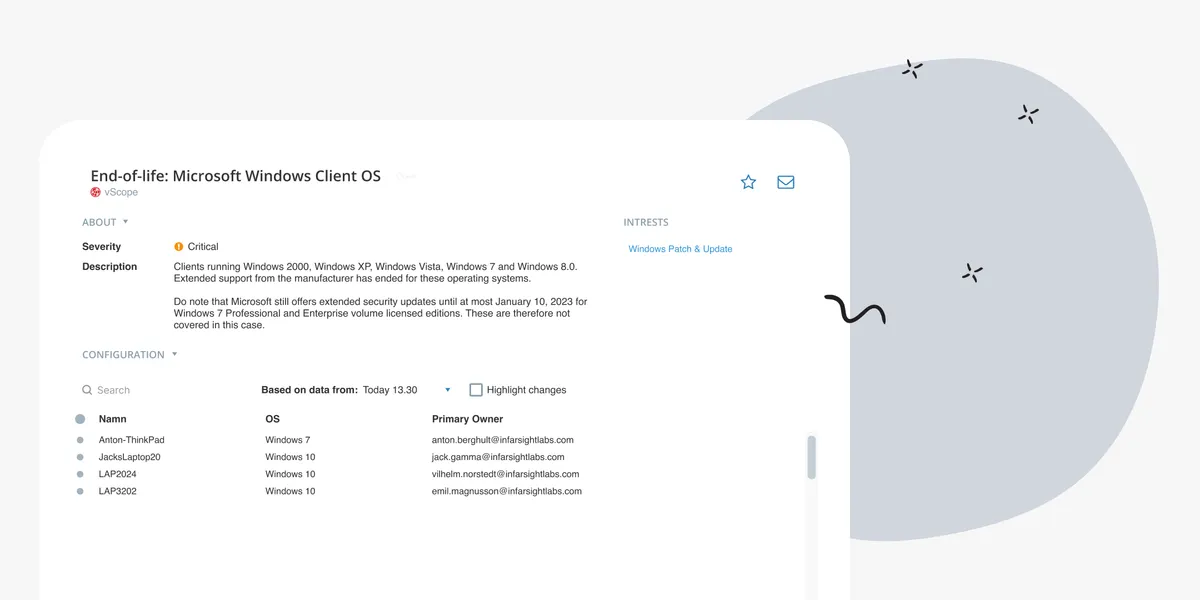
Last Day for Windows 10 - Are Your Clients Ready?
As of October 15, 2025, Microsoft officially ends support for Windows 10. In this article, we explore what that means, why Microsoft is making this change, and how you can use vScope’s inventory and prebuilt insights to stay ahead.
October 15 marks the end of an era for Windows 10. In this post, we’ll explain what it means for those responsible for IT environments or client management - the risks involved, and how you can use vScope to maintain control during the transition.
What’s happening?
As of October 15, 2025, Microsoft officially ends support for Windows 10. (Microsoft: Windows 10 Support Ends on October 14) This means no more security updates, bug fixes, or technical support for the operating system. For anyone managing an organization’s client environment, this date marks a critical milestone — the last opportunity to ensure all clients are updated or that there’s a clear plan for managing devices going forward.
Why is Microsoft making this change?
Microsoft follows a clear lifecycle policy for its Windows releases, where each version is supported for a limited time. Windows 10 has reached its “end-of-life” and will gradually be phased out in favor of a more modern platform — Windows 11. With Windows 11, Microsoft is focusing on stronger security, a more modern interface, and improved performance. By ending support for Windows 10, Microsoft can focus resources on developing new functionality and enhancing the security of its newer operating systems.
What does this mean for organizations - and what if you don’t act?
You might think there’s still plenty of time, or that it’s not a top priority yet. However, choosing not to migrate from Windows 10 comes with serious risks:
- No security patching - After end-of-life, newly discovered vulnerabilities will no longer be fixed. Systems running Windows 10 will gradually become more exposed to attacks.
- Compliance and regulatory risks - Many frameworks and standards (such as ISO or NIS2) require actively maintained and supported systems. Running unsupported software may put your organization out of compliance.
- Support and compatibility issues - Software vendors and hardware manufacturers will gradually drop support for Windows 10. Drivers and applications may stop working or develop bugs without fixes available.
- Extra costs via ESU - Microsoft offers an Extended Security Updates (ESU) program as a temporary option to buy extended coverage after October 14, 2025. (Microsoft: Extended Security Updates (ESU) program for Windows 10) However, this comes with additional per-device licensing costs and is not a sustainable long-term strategy.
- Trust and risk exposure - Organizations running critical systems on unsupported operating systems risk losing trust from management, customers, or auditors.
It’s important to note: after October 14, Windows 10 will still run on your devices — but without any guarantee of security or support.
How vScope simplifies your transition
With vScope, you get a central platform to organize, analyze, and monitor your entire client environment — before, during, and after migration. Powered by industry-leading IT discovery, vScope keeps your documentation automatically up to date and easy to share across teams.
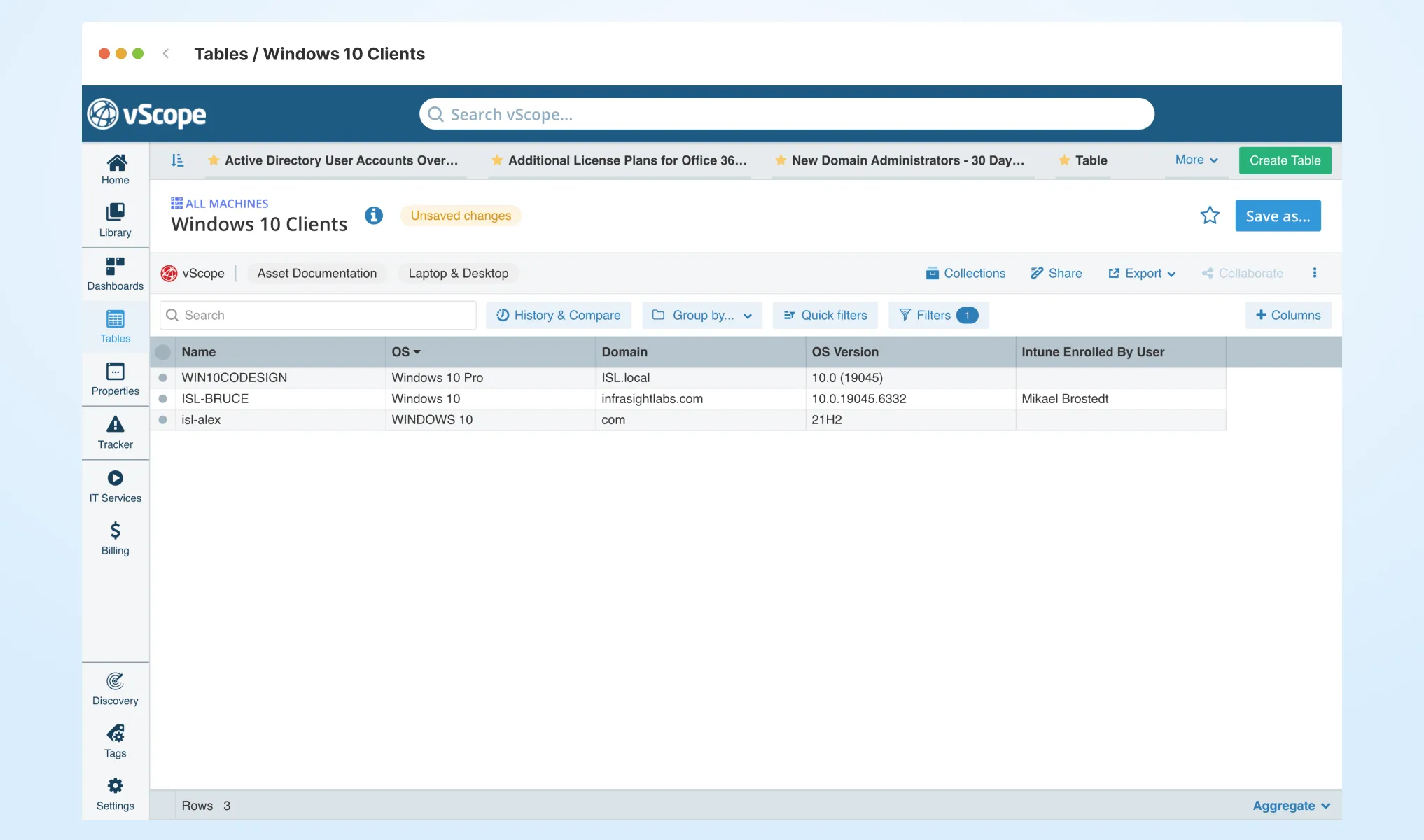
Beyond what we call your asset inventory, vScope also provides ready-made documentation and analyzes to help you track your Windows 10 migration progress. Examples include:
- Windows 10 Clients → see which devices are still running Windows 10
- TPM Devices Overview → verify that your devices meet the hardware requirements for Windows 11
- End-of-life: Operating System → identify OS versions approaching or past their end-of-life date
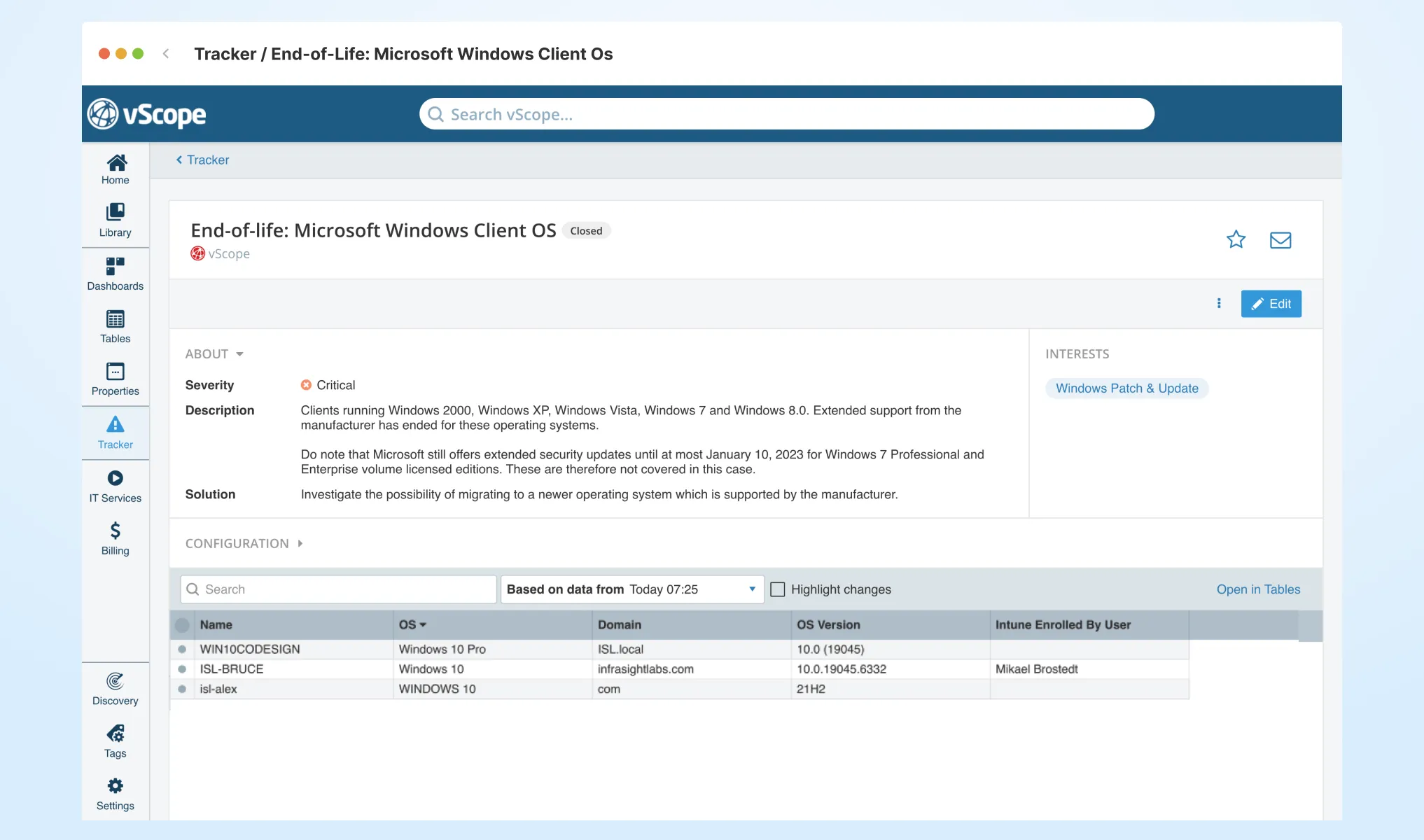
Of course, you can also create your own documentation, alerts, and analyses, or customize the built-in reports to fit your organization’s needs.
Want to see how vScope can help your organization identify, track, and document Windows 10 clients ahead of the migration? Get in touch →
Related blog posts
All posts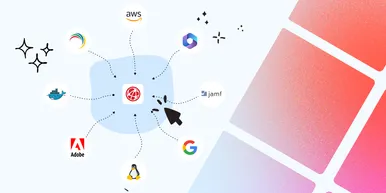
Effective Configuration Management Requires Transparency Across All Systems
In modern IT environments, the gap between reported and actual configuration is bigger than most people realize. In this article, I explain why accurate inventory requires collecting data about each asset from multiple sources — not just one.
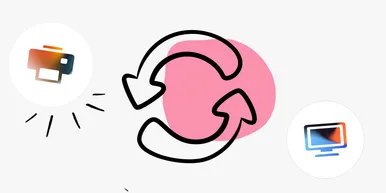
How Lifecycle Cost Analysis Helps You Make Smarter IT Decisions
IT teams are under constant pressure to deliver more with less. But without understanding the true cost of every server, license, or laptop, even the most well-planned budgets can spiral out of control.

How Microsoft's New Licensing Model Impacts You - and How to Prepare with vScope
Starting November 2025, Microsoft will remove volume discounts in Enterprise Agreement, MPSA, and OSPA. In this article, we explain what the change means for your organization, and how vScope helps you gain full visibility and control of licenses and costs across your environment.
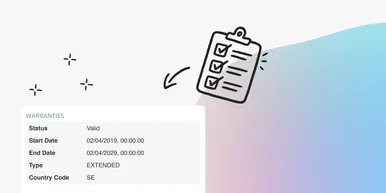
Warranty Management in Practice: Checklist, Pitfalls, and How to Automate with vScope
Learn how to manage device warranties the right way. We walk through a step-by-step checklist for manual warranty tracking and how to automate follow-ups, reports, and alerts with vScope Discovery.
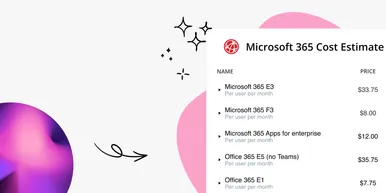
How to Optimize Microsoft Licenses to Save Both Money and Time
Keeping track of Microsoft licenses is one of the biggest challenges for many IT departments. With vScope’s new pre-packaged content, you gain better visibility and can easily identify hidden costs, inactive accounts, and overlapping licenses.

Optimize Your Database Environment: Pre-Built Content for Performance and Savings
Databases are the backbone of nearly every modern organization. From customer data to transactions and internal systems, your business relies on their performance and availability. In this post, we explore new content in vScope that helps you simplify and succeed in database management.
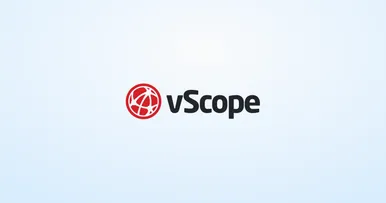
Tackling Application Chaos: Why Comprehensive Windows Application Inventory Matters
Managing software and applications across an IT environment is often more complicated than it seems. IT teams regularly face challenges such as uncertainty about which applications are actually in use, outdated inventories, or inefficient manual tracking processes. The larger and more dynamic your IT environment, the harder it becomes to keep track of software, leading to inefficiencies, higher costs, and potential security vulnerabilities.

Improve IT Service Management: How IT inventory supports you working in a service desk
Explore how vScope's IT inventory streamlines the daily work of Service Desk professionals, supporting troubleshooting, license verification, documentation, and proactive incident management.

Everything you need to know about IT Asset Management
You’ve spent a lot of time and money on technology for your organization, but are you getting the most out of your IT investments? Collecting inventory data and tracking contract statuses throughout the lifecycle of an asset is critical. Capturing your asset data in one location enables better IT asset management and tracking of hardware, software, licenses, ticket history, and even non-IT assets.